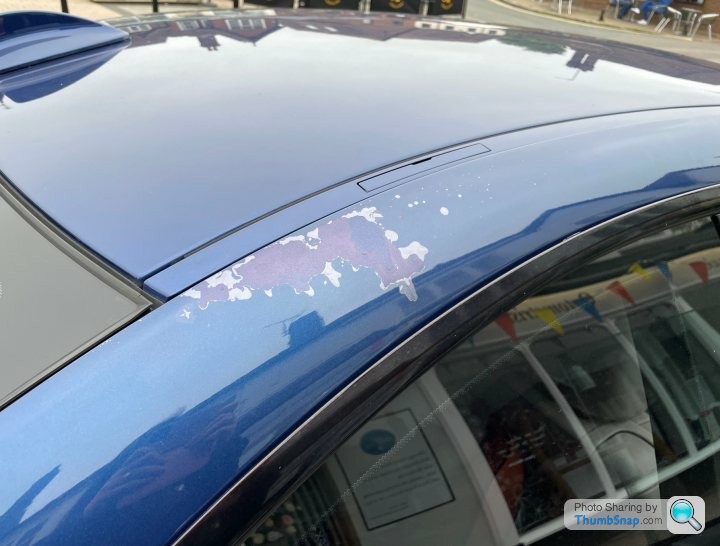Lacquer peel, also known as clear coat failure, is a common cosmetic issue that can significantly detract from your car’s appearance. It occurs when the clear top layer of your car’s paint begins to separate from the base coat, resulting in a flaky, unsightly look. While it might seem like a disaster, repairing lacquer peel is often achievable, even as a DIY project. This guide will walk you through the process of repairing lacquer peel, helping you restore your car’s paintwork and protect it from further damage.
Understanding Lacquer Peel and Its Causes
Before diving into the repair process, it’s crucial to understand why lacquer peel happens in the first place. Modern car paints typically consist of multiple layers: primer, base coat (color), and clear coat (lacquer). The clear coat is designed to protect the color coat from UV rays, scratches, and environmental contaminants, providing that glossy shine we all admire.
Lacquer peel primarily occurs due to the degradation of this clear coat layer. Several factors contribute to this breakdown:
- UV Radiation: Prolonged exposure to sunlight is the most significant culprit. UV rays break down the polymers in the clear coat over time, causing it to become brittle and lose adhesion.
- Environmental Factors: Harsh weather conditions, acid rain, road salts, and pollutants can accelerate the deterioration of the clear coat.
- Poor Paint Application: In some cases, lacquer peel can be attributed to manufacturing defects or poor paint jobs, where the clear coat wasn’t properly applied or bonded to the base coat initially.
- Age and Mileage: As cars age, the paint layers naturally become more susceptible to wear and tear, including lacquer peel. Cars with higher mileage, especially those frequently exposed to the elements, are more likely to experience this issue.
Understanding these causes helps you not only address existing lacquer peel but also take preventative measures to protect your car’s paint in the future.
DIY Repairing Lacquer Peel: Step-by-Step Guide
For minor to moderate lacquer peel, a DIY repair can be a cost-effective solution. It requires patience, some basic tools, and a bit of elbow grease. Here’s a step-by-step guide to help you through the process:
What You’ll Need: Materials and Tools
- Sandpaper: Various grits – 400, 800, 1200, 1500, 2000, 3000 grit wet and dry sandpaper.
- Rubbing Compound: For leveling and removing sanding marks.
- Polishing Compound: For refining the finish and enhancing gloss.
- Car Polish and Wax: For final protection and shine.
- Masking Tape and Paper: To protect surrounding areas.
- Microfiber Cloths: For cleaning and polishing.
- Spray Can Clear Coat Lacquer: Choose a high-quality automotive clear coat compatible with your car’s paint.
- Tack Cloth: To remove dust and particles before spraying.
- Spray Bottle with Water: For wet sanding.
- Sanding Block: For even sanding.
- Safety Gear: Gloves and respirator mask.
Step 1: Cleaning and Preparation
Thorough cleaning is essential for a successful repair. Wash the affected area and surrounding panels with car soap and water to remove dirt, grime, and wax. Dry the area completely. This ensures that you’re working on a clean surface and prevents contaminants from being trapped under the new clear coat.
Step 2: Sanding the Peeling Lacquer
This is the most crucial and time-consuming step. The goal is to remove the loose, peeling lacquer and smooth out the edges of the remaining clear coat.
- Start with 400 grit sandpaper: Using wet sanding technique (soak sandpaper in water and keep the surface wet while sanding), gently sand down the peeling lacquer. Focus on the edges of the peeling areas to feather them out. Use a sanding block for even pressure.
- Progress to finer grits: Gradually move to 800, 1200, 1500, 2000, and finally 3000 grit sandpaper. With each grit, you are refining the scratches left by the previous, coarser grit. Wet sand with each grit, ensuring the area stays lubricated with water. The surface should become progressively smoother.
Step 3: Masking the Area
Once sanding is complete and the area is smooth, thoroughly clean and dry the sanded area. Use masking tape and paper to carefully mask off the surrounding areas that you don’t want to spray with clear coat. Precise masking is key to achieving a professional-looking repair and preventing overspray.
Step 4: Applying New Clear Coat Lacquer
- Apply thin coats: Shake the clear coat spray can well according to the manufacturer’s instructions. Hold the can about 8-10 inches away from the surface and apply a very light, even coat. The first coat should be just a mist coat.
- Subsequent coats: Allow each coat to tack up (become slightly sticky) before applying the next. Apply 2-3 more medium coats, building up the clear coat gradually. Avoid applying too much clear coat in one go, as this can lead to runs and drips.
- Drying time: Let the clear coat dry completely according to the product instructions. Drying times can vary depending on temperature and humidity.
Step 5: Blending and Polishing
After the clear coat is completely dry (usually 24-48 hours), you may notice some texture or orange peel. This is normal and can be corrected with further sanding and polishing.
- Light Wet Sanding (if needed): If there is orange peel or imperfections, lightly wet sand the new clear coat with 2000 and then 3000 grit sandpaper to level the surface. Be very careful not to sand through the new clear coat.
- Rubbing Compound: Apply rubbing compound to a microfiber cloth and buff the repaired area using circular motions to remove fine sanding scratches and level the clear coat further.
- Polishing Compound: Follow up with polishing compound using a clean microfiber cloth to refine the finish and bring out the gloss.
- Polish and Wax: Finally, apply a high-quality car polish and wax to protect the repaired area and enhance the shine, blending it seamlessly with the surrounding paintwork.
When to Seek Professional Help
While DIY repair is suitable for many cases of lacquer peel, there are situations where professional help is recommended:
- Extensive Lacquer Peel: If large areas of your car are affected, or if the peeling is very deep and reaches the base coat, a professional respray might be necessary.
- Lack of Confidence or Experience: If you’re not comfortable with sanding and spraying, or if you are concerned about damaging your car’s paint, it’s best to consult a professional body shop.
- Color Matching Issues: For metallic or complex paint colors, achieving a perfect color match with spray cans can be challenging. Professionals have the tools and expertise to ensure seamless color blending.
- Structural Damage: If the lacquer peel is accompanied by rust or body damage, professional repair is essential to address the underlying issues before repainting.
Cost of Professional Lacquer Peel Repair
The cost of professional lacquer peel repair varies depending on the extent of the damage, the size of the area needing repair, the type of car, and the labor rates of the body shop. Generally, you can expect to pay anywhere from a few hundred to over a thousand dollars for professional lacquer peel repair. A full respray of a panel or multiple panels will naturally be more expensive than a localized repair. Getting quotes from several reputable body shops in your area is advisable to compare prices and services.
Preventing Future Lacquer Peel
Prevention is always better than cure. Here are some tips to protect your car’s paint and minimize the risk of lacquer peel:
- Regular Washing and Waxing: Regularly wash your car to remove dirt and pollutants. Applying wax or sealant creates a protective layer against UV rays and environmental damage.
- Parking in Shade: Whenever possible, park your car in shaded areas or use a car cover, especially during peak sunlight hours.
- Promptly Address Damage: Repair any scratches or chips in the paintwork promptly to prevent moisture and contaminants from getting under the clear coat and causing further damage.
- Use Quality Car Care Products: Use high-quality car wash soaps, waxes, and detailing products that are designed to protect your car’s paint.
By understanding the causes of lacquer peel and taking proactive steps, you can prolong the life of your car’s paint and keep it looking its best for years to come. Whether you choose the DIY route or opt for professional repair, addressing lacquer peel will significantly enhance your car’s appearance and maintain its value.


